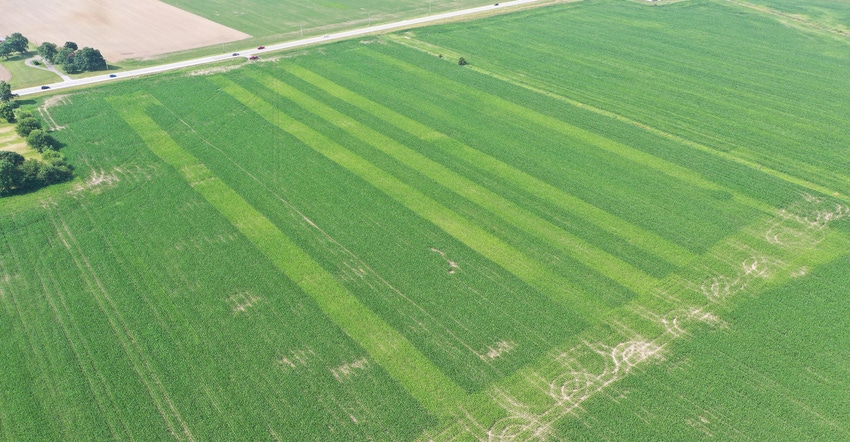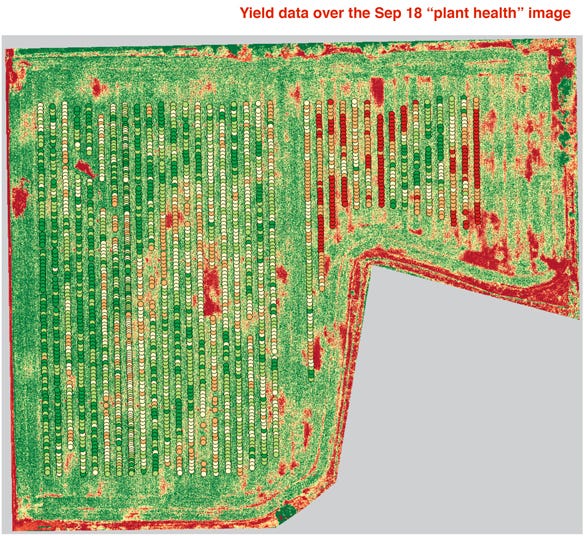
By now you likely know the story. Crops once got all the sulfur they needed from atmospheric deposition from coal-fired utility plants. Once utilities began cleaning up emissions to comply with the Clean Air Act, considerably less sulfur was released. As a result, people started looking for responses to sulfur they applied in corn and soybeans, and some people found it. But not everyone finds a response everywhere.
“We’ve been doing on-farm scale replicated testing in corn both on farms and at Purdue ag centers,” says Jim Camberato, Purdue University Extension agronomist. “We don’t see results every time. But when we see results, they can be significant. In those cases, the payback can be dramatic.”
So far, Camberato and Bob Nielsen, Purdue Extension corn specialist, have seen significant yield increases for sulfur in nine of 19 trials. In 2019, they saw significant increases in three of nine trials. Two of the nine were at opposite ends of Shelby County, Ind., on farms.
“We’ve seen significant results on one farm in Shelby County with silt loam soils for two years in a row,” Camberato says. “The farmer is excited, because he’s seeing a large return on his investment. You can see the difference in growth during the season, and it shows up in yield at harvest.”
In fact, the average increase on roughly a 40-acre field in 2019 was 20 bushels per acre. When sulfur only costs about $5 per acre and is made in a sidedress application of nitrogen that would have been made anyway, that’s a noteworthy payback.
The yield response in one area within the field was 40 bushels per acre. Corn in that section of the trial struggled the most, planted into wet soils.
Story so far
The bottom line based on that one farm was a 20-bushel-per-acre increase in 2019, and a significant increase two years in a row, Camberato says. They also concluded that 10 pounds per acre of sulfur produced the maximum benefit. There was no benefit for adding boron.

WHERE SULFUR PAID: This map of a field in Shelby County, Ind., provided by Bob Nielsen, consists of the yield map laid over a plant health map from a late-season drone flight. Lighter or red colors indicate poorer crop health. Green colors represent better health and higher yield.

“What we’re trying to do now is determine why we see responses, sometimes big responses, on some soils in some years, and not in other cases,” Camberato says. “Sulfur can be lost somewhat like nitrogen. There are theories about when it should be applied for the most benefit, but we don’t have answers yet.”
There are also theories about why farmers may see benefits in some places and not in others. It’s known that sulfur can accumulate in the subsoil on certain soil types, Camberato says. Is it possible roots reach into that supply in some soils? There are also reports of finding sulfur in MAP and DAP fertilizer applied for phosphorus. If those sources are used, is the crop getting enough sulfur that it doesn’t respond?
Camberato says they need more in-depth studies to answer these questions. Unfortunately, support for this and some other Purdue agronomic-based studies from the Indiana Corn Marketing Council was dropped for 2020.
“We still intend to do field testing as we can,” Camberato says. “We need more farm cooperators willing to work with us.”
If you’re interested, email Camberato at [email protected].
About the Author(s)
You May Also Like




